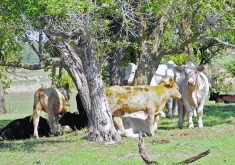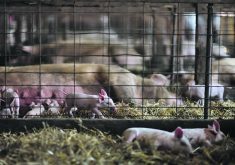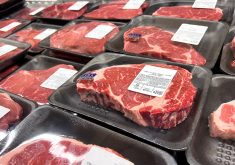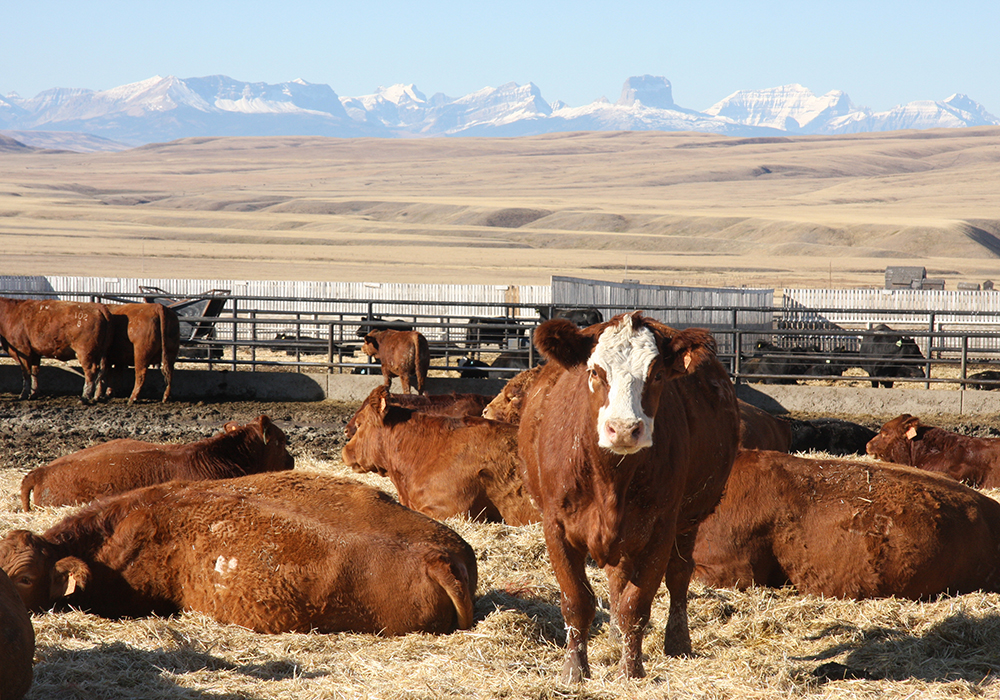New proposed standards for meat labelling in the United States have again caused Canadian producers to cry foul as regulators south of the border seek to solidify “Product of USA” labelling practices within the integrated North American marketplace.
The latest initiative by the U.S. Department of Agriculture would allow for only beef, pork and poultry from animals born, raised and slaughtered in the U.S. to carry “Product of USA” labelling.
Current regulations require meat products to undergo “significant transformation” within the U.S. to carry the label. Critics of the current rules argue that definition includes minimal efforts, such as cutting sides of beef within the U.S. to qualify for a “Product of USA” label, which they call an effort to mislead consumers.
Read Also

New program aims to support plant-based exports to Asia
Understanding the preferences of consumers in Taiwan and how they differ from Indonesia or Malaysia isn’t easy for a small company in Saskatchewan.
Unlike the previous attempt in 2009 by the U.S. to impose mandatory country-of-origin labelling, the latest proposal would be voluntary.
The previous attempt more than a decade ago was struck down in 2015 following a challenge by Canada and Mexico to the World Trade Organization over unfair trade practices.
According to a statement posted by the U.S. Cattlemen’s Association on the new requirements, it’s the first step in the return to mandatory country-of-origin labelling laws.
The proposed rule is a mistake that could cost U.S. consumers and hamper food supply chains, said Dennis Laycraft, Canadian Cattle Association executive vice-president. He said its effects could become the same as mandatory regulations.
“The previous ruling we won and we have retaliation rights around really focused on how the (previous MCOOL) rule discriminated against the import of live cattle and hogs from Canada and Mexico,” said Laycraft. “And it had a lot to do with the extra costs and extra segregation that fell on imported livestock.”
That segregation required live animals imported to the U.S. to be kept separate in fields, feedlots and processing facilities to comply with U.S. regulations.
“What we actually saw was some plants would only take Canadian animals certain days of the week,” said Laycraft. “That, first of all, required more cattle to be trucked on fewer days, which would be very difficult right now with the shortage of truckers.”
Laycraft said he’d like to see the U.S. change the current proposal to define meat product country-of-origin at slaughter, which would better meet the “significant transformation” requirement for “Product of USA” labelling.
With more than 700,000 head of cattle exported annually from Canada into the U.S., the proposed new rule would negate the benefits of the integrated North American beef trade, he added.
Laycraft said a more surgical fix would better address South American beef imports, which may have skirted the “significant transformation” requirements.
The issue also has hog producers concerned, according to Stephen Heckbert, Canadian Pork Council executive director.
“This is a solution to a problem no one has,” he said of the proposed new standards.
Heckbert questioned the market research that went into development of the new proposed rules, which surveyed American consumers on whether they would pay more for products made in the U.S.
“As soon as that meets the reality of having to pay more for it, I think consumers would immediately say ‘no’,” he said. “If asked in the rhetorical, they will say, ‘of course we would’.”
While the proposed regulations are only voluntary, Heckbert said there are retailers who would take up the initiative.
That would have a negative impact on Canadian pork producers, which Heckbert said are as integrated with the U.S. market as beef producers, possibly more so. He said American processors rely heavily on Canadian pigs, and American producers are major buyers of Canadian weanlings.
“Something like this has an impact on American producers’ ability to access their feeder stock,” he said. “It is a bit of a surprise but I will also say it’s the law of unintended consequences. This is something that perhaps they thought would be beneficial in one sector but it would cause significant disruption in the supply chain in the pork industry.”
Heckbert added American and Canadian meat producers share a desire for regulatory simplicity.
In a statement from U.S. Cattlemen’s Association president Justin Tupper, the organization highlighted its 2019 petition to the U.S. Food Safety and Inspection Service.
That petition “called out the practice of applying ‘Product of the USA’ and ‘Made in the USA’ labelling claims on beef products that the food safety agency itself admitted could have come from other countries,” said Tupper in the statement. “USCA is pleased to see that the proposed rule finally closes this loophole by accurately defining what these voluntary origin claims mean, something we have been working to clarify since the repeal of mandatory country-of-origin labelling in 2015.
“If it says, ‘Made in the USA,’ then it should be from cattle that have only known U.S.A. soil. Consumers have the right to know where their food comes from, full stop.”
Both Laycraft and Heckbert say their organizations will provide responses to the new proposed regulation, which is now open for a 60-day comment period.


















